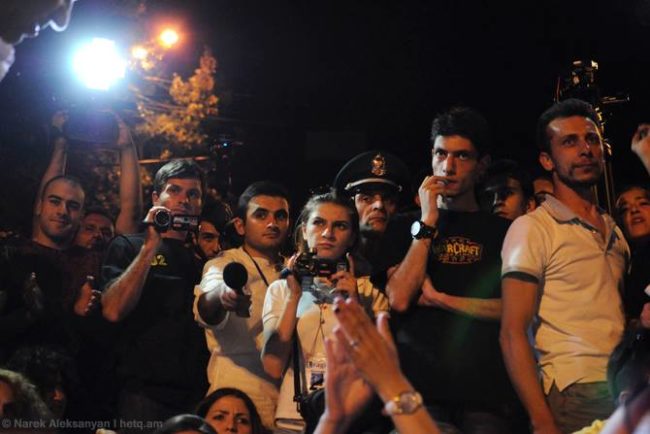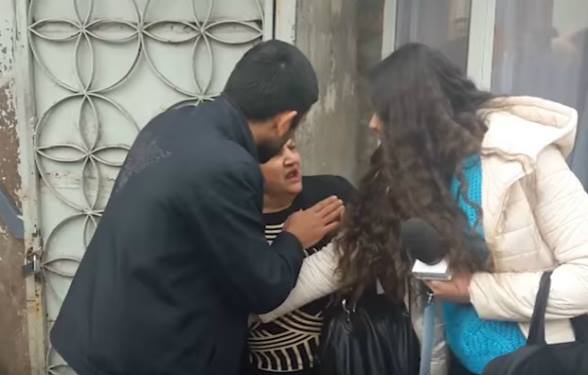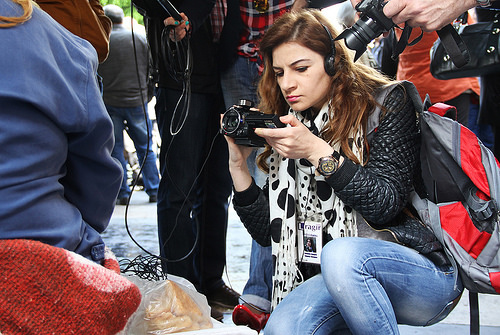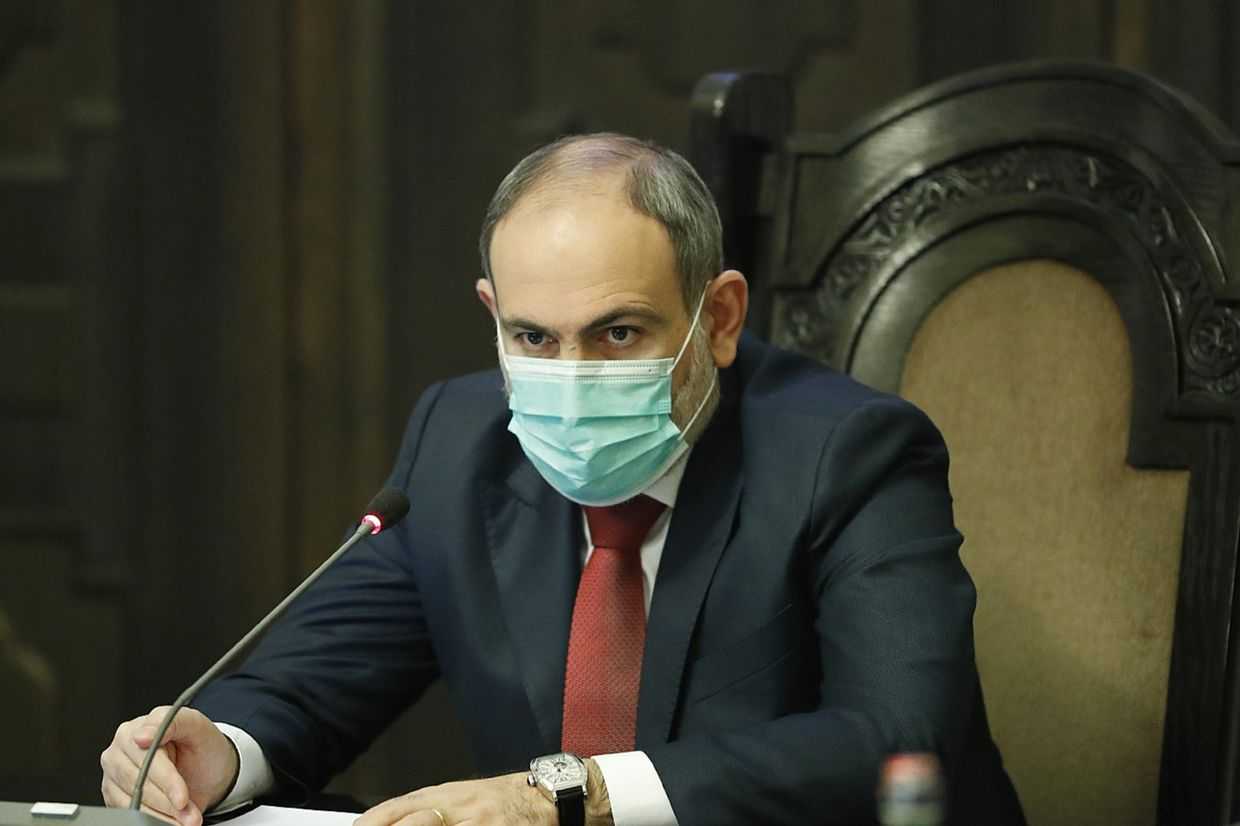

 Obstruction of journalists and violence against them once again came to the fore during the latest parliamentary elections in Armenia on 2 April.
Obstruction of journalists and violence against them once again came to the fore during the latest parliamentary elections in Armenia on 2 April.
Ashot Melikyan, chairman of the Committee to Protect Freedom of Expression (CPFE), an Armenian media advocacy group, believes that the latest election was no different than previous ones, although the authorities had claimed that the electoral process would be held to a high standard.
‘We recorded 10 cases of physical violence, obstruction of professional activity, and pressure [against journalists]’, he said.
Nine local media organisations issued a statement on 3 April demanding an independent investigation of violations, and initiation of criminal cases. They asked that the Prosecutor’s Office exercise proper supervision, and to bring to justice all those responsible.
What happened
RFE/RL first reported electoral violations on the day of the election. Journalist Sisak Gabrielyan was reporting from the election headquarters of ruling Republican Party candidate Hakob Beglaryan, which was near one Yerevan’s polling station. He noticed a large number of people constantly entering and leaving the building. In his report, he claimed that he had entered the headquarters and found a list of 30–40 names with addresses and ID data.
‘However, people from the headquarters attacked us, hit us in the eyes and started shouting. We had to leave, but we noticed that people continued going there. One woman said that people from the list received a certain payment’, Gabrielian said.

At the same place, Shogik Galstyan, correspondent for local news agency Araratnews was also attacked. Galstyan told OC Media that she noticed some commotion at the headquarters and tried to enter, but she was not allowed in.
‘We tried to shoot it, but some local people intervened. One woman snatched the camera from my hands, and then started fighting with my cameraman’, she claimed.
She added that the situation worsened when Gabrielyan tried to shoot what was happening inside.
‘It seems that they received bribes there. And since residents did not want this to become public, they began to interfere with the work of journalists, insulting and starting fights’, she said.
Later, another man returned her camera to Galstyan. She reported the incident to the police and left the with her cameraman.
A criminal cases was launched into the incident for ‘obstruction of the exercise of citizens’ electoral rights, as well as the activities of members of election commissions and initiative groups, candidates or their agents, observers, representatives of the media, authorities by parties that are accompanied by violence or threat of violence by a group of people’, which is punishable by imprisonment for up to 5 years.
This is not the first time that Galstyan has faced violence for her professional activity. During the municipal elections on 2 October 2016, at a polling station in Vanadzor city, local resident Mariam Avakyan took the journalist’s smartphone and smashed it. The Court of General Jurisdiction of Lori Marz fined the woman ֏700,000 ($1,442).
According to Galstyan, in both cases, the visible side of the conflict was ordinary people who worked for the Republican Party and were involved in the electoral process. She hopes that punitive measures will be taken. However, she mentioned that, unfortunately, punishment is handed out to scapegoats, not the people who are giving the orders. At the same time, the question remains for Galstyan: why residents themselves do not want to identify and punish the people pushing them to such actions.
Journalists forced to appeal to international institutions
The notorious attack on local media outlet Lragir’s correspondent, Tehmine Yenokyan, during the Electric Yerevan protest in June 2015 has still not been completed, two years after the incident.
Demonstrators protesting against a hike in electricity rates blocked Yerevan’s Baghramyan Avenue, where the presidential residence is located, for several days. Police cracked down hard on journalists, massively impeding their ability to report on the protests. As a result, 24 journalists — reporters, camera operators, photographers — were injured.
According to Yenokyan, one policeman swore obscenely at her during the rally, for which he was reprimanded and soon left his position.

The investigation into the incident has not shown any progress. Yenokyan has taken the case to the European Court of Human Rights. It was initially dismissed because of lack of necessary documentation, however, Yenokyan is now trying for a second time. ‘Together we a new lawyer, Ara Ghazaryan, and the Committee to Protect Freedom of Expression, they have succeeded in obtaining acceptance into the proceedings of the case with a demand a proper judicial investigation’, she said.
‘Journalists have been working despite the violence all these years, but the perpetrators are not being held criminally liable, which speaks of the lack of security for journalists’, Yenokyan said.
Her lawyer, Ghazaryan, is representing several journalists. He argues that the investigating violence against journalists, and obstructing their reporting, is moving very slowly. In particular, cases related to the Electric Yerevan protests. ‘It is high time to complete the preliminary investigation and proceed to court’ he says.
‘Judicial decisions over Electric Yerevan were taken in only four cases, although 23 people were recognised as victims. This is a very low figure, indicating that things are not moving forward,’ said the lawyer.
‘Perhaps the Special Investigative Service is too busy, but according to data, more than 100 cases have very weak legal consequences. So we have problems in the system, which has an inconsistent approach,’ Ghazaryan claims.
According to CPFE, in 2016, Armenian media employees had to work in extremely unfavorable conditions. Mass violence against journalists with riot control gear accompanied the protests following the armed takeover of a police station in Yerevan on July 17 by Sasna Tsrer (the Daredevils of Sasun).
Yet more evidence of violence against journalists was recorded during the municipal elections in September–October 2016, as well as a number of incidents in relatively quiet periods.
In 2016, CPFE recorded 10 cases of violence, which affected 26 journalists and cameramen, 52 cases of other kinds of pressure, as well as 33 violations of a journalist’s right to obtain and disseminate information.
There were 17 prosecutions of journalists in 2016; 14 were for insults and slander, two for extortion, and one for violation of the presumption of innocence.


![Armenia’s ‘patronage democracy’ [Analysis]](/_next/image/?url=https%3A%2F%2Foc-media.org%2Fcontent%2Fimages%2Fwordpress%2F2019%2F12%2Felection-armenia-cropped.jpg&w=3840&q=50)




